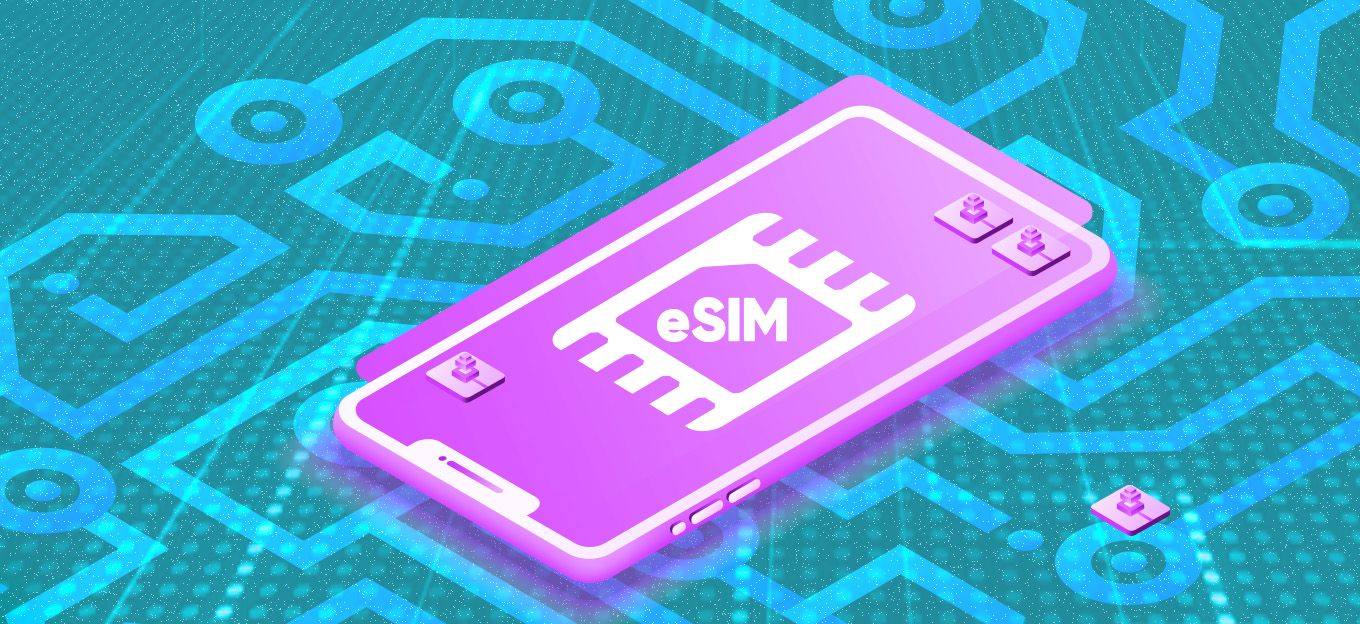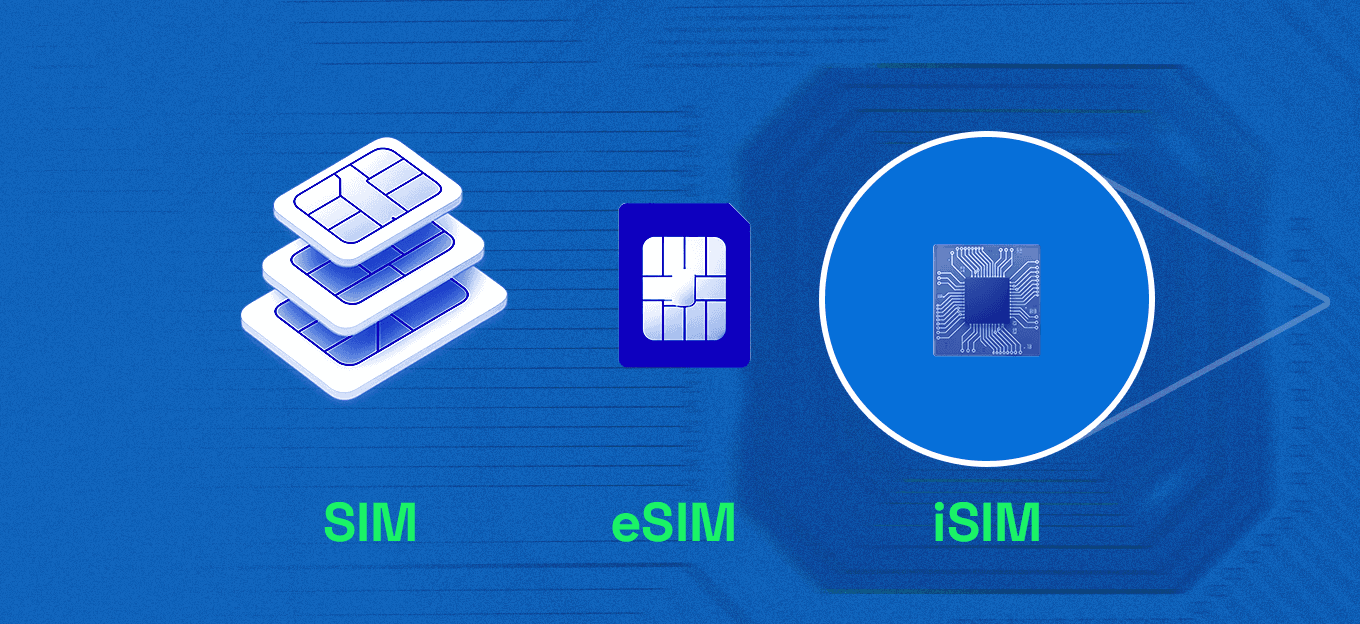Why eSIM and IoT Resilience is Essential for Retail Business Continuity
Why eSIM and IoT Resilience is Essential for Retail Business Continuity
- Last Updated: November 5, 2025
1GLOBAL
- Last Updated: November 5, 2025



Recent high-profile cyberattacks on the digital infrastructure of several household-name brands have been a wake-up call for businesses around the world. Are we all just one bad day away from massive financial loss and customer frustration through outages of supply and sales? It’s time to take retail resilience seriously.
Let's look at how retailers can transform weakness into a strength by embracing smart eSIM and IoT-powered solutions, building a resilient foundation for business continuity that ensures always-on connectivity and operational agility.
The Balance of Modern Retail
The digital ecosystem of modern retail is both more powerful and yet more fragile than ever. In an era defined by interdependent systems and cloud-based operations, the ability to move product through a supply chain and process a transaction isn't a simple matter of a truck, a cash drawer, and a receipt.
The Point-of-Sale (POS) also represents the public face of a complex digital supply chain encompassing local networks, internet service providers, payment gateways, and cloud infrastructure. Recent history has delivered the clear and costly verdict that reliance on traditional, centralized connectivity is a critical business vulnerability.
The question isn't if disruption will occur, but when and how resilient the business will be in its wake.
Cyber Threats Increasing
Cyber threats continue to mutate with alarming speed. In the year up to August 2025, the UK's National Cyber Security Centre (NCSC) managed 204 ‘nationally significant’ attacks, which was over double the previous year. This isn't a distant, abstract threat confined to the IT department, and frequent news headlines illustrate how they have directly impacted the operations of household names.
Retail giant Marks and Spencer saw its online store forced offline for nearly seven weeks following an attack, while other major brands, including Harrods, Adidas, H&M, and Victoria's Secret, have all reported significant cyber incidents. These events underscore a new reality where the enemy is constantly at the gates and a brand's digital presence is under permanent siege.
This danger is compounded by the unexpected fragility of large parts of the global internet infrastructure itself. The major service outages of 2024 provided stark evidence that even the largest technology and telecommunications providers aren't immune to failure.
Widespread disruptions at AT&T, Microsoft 365, and Salesforce created cascading effects, impacting countless businesses that rely on their services for everything from communication to customer relationship management.
When a core cloud platform or a primary ISP goes down, it can sever a retailer's connection to its own critical systems, grinding business to a halt. The financial consequences of this fragility are staggering. In 2024, an average single minute of IT downtime costs an enterprise over €22,000, which adds up to an estimated €376 billion in annual outage losses for Global 2000 companies.
The primary danger to retail continuity isn't isolated hardware failures but a complex, interconnected web of systemic risks. Cyberattacks increasingly target third-party vendors and supply chains, as seen in breaches at Salesforce and Jaguar Land Rover (JLR), the latter of which was severe enough to merit government intervention.
The hard lessons learned include that retail resilience is no longer determined by the strength of on-premises systems but by the weakest link in a very long chain of partners, subcontractors, and dependent systems across an entire digital ecosystem.
Growing Expectations vs. Aging Infrastructure
Today's shoppers demand frictionless experiences. They expect to pay how they want, whether with traditional cards, digital wallets like Apple Pay, Buy-Now-Pay-Later services, and possibly even cryptocurrency.
The checkout process is retail’s most critical touchpoint, and any delay will have immediate consequences. Legacy POS systems, often burdened by sluggish processors and clunky interfaces, can add a seemingly inconsequential 10 to 15 seconds to each transaction. In peak hours, this minor delay devolves into long lines, frustrated customers, abandoned carts, and lost sales.
After three minutes of delays, a store will already be fast losing customers, and by five minutes, the vast majority will have already abandoned their purchase. Across enterprise-scale franchises, the cumulative loss of business is enormous.
Keep in mind that in a competitive and digitally active market, a business isn’t just competing against a customer’s patience, but all of the online alternatives that are a couple of clicks away.
The Risk of Legacy Systems
Compounding the attention-span issue is the rigid, aging infrastructure that underpins many retail operations. The vast majority of POS systems were designed in a different era and are ill-equipped for the demands of modern commerce. They typically operate as isolated silos, creating a host of operational and security challenges.
Standalone POS software is ironically a prime target for both cybercriminals and law enforcement. Legacy systems often don't receive timely security updates and struggle to meet modern compliance standards like the Payment Card Industry Data Security Standard (PCI DSS), leaving businesses exposed to both data breaches and the heavy fines that follow.
Meanwhile, the same siloed systems will lack the open APIs necessary for broader integration with modern business tools. Data from Sales, CRM, e-commerce platforms, and inventory management systems will all remain locked in their dedicated systems, letting these valuable resources wither on the vine or forcing time-consuming manual data migrations.
Cut Corners and Dead Zones
It became a common temporary fix for retailers to bridge the gap by deploying handheld POS extension terminals tied to their Wi-Fi. Almost all quickly discovered that this approach traded one set of problems for another.
Off-the-shelf Wi-Fi is inadequate as a foundation for mission-critical operations. Coverage is often patchy, with dead zones in crucial areas like stockrooms, loading docks, or even dense parts of the sales floor.
A single point of failure could now shut down the inventory scanners, electronic shelf labels, back-office systems, guest Wi-Fi, and the entire store's payment system via even just a flickering internet outage. The effort to improve the customer experience through Wi-Fi terminals really just better illustrated most locations’ profound lack of operational resilience.
From Vulnerability to Asset
The solution was to adopt a foundational principle of IoT, and to treat connectivity not as another utility piped into a building but as an adaptive and secure component of the system itself. This was achieved by moving mission-critical transaction data off of individual vulnerable local networks and onto disseminated, resilient cellular IoT connections powered by embedded SIM (eSIM) technology.
Cellular is by design more secure and resilient than Wi-Fi. Mobile networks are built to carrier-grade standards with robust, end-to-end encryption, authentication protocols, and service-level agreements (SLAs) that ensure dependable performance. By using a cellular connection, a POS terminal transmits payment data over a private, isolated network, completely separating it from the security risks and performance volatility of the public-facing in-store Wi-Fi network.
The tech that unlocks this capability at scale is the eSIM. An eSIM isn't a physical, removable card but a small, programmable chip that's permanently part of a device's hardware. While also useful from a design standpoint, the transformative feature is Remote SIM Provisioning (RSP). This GSMA-standardized tech allows cellular connectivity credentials to be securely downloaded and activated over-the-air (OTA) without ever needing to physically touch the device.
For a fleet of retail POS devices, this enables multi-carrier support for every device. An eSIM can store multiple profiles simultaneously, so if a device's primary network becomes unavailable or too congested, the eSIM will automatically switch over to an alternate network to maintain its connection. This capability elevates POS from a position of fragile dependency to being the most resilient, multiply-redundant system in the store.
The Advantages of eSIM POS
Resilience
The most critical and immediate benefit. When used as a failover backup, should the primary connection go down, the system automatically switches to the strongest available cellular network. The multi-carrier capability of eSIM provides crucial layers of redundancy across the IoT industry, in everything from agriculture to logistics to self-driving cars. This layered approach transforms POS uptime from an objective into a known resource, ensuring that transactions can always be processed.
Flexibility
Untethering the POS terminal from in-store fixed infrastructure unlocks operational flexibility and enables new business models. The partial success that Wi-Fi tech had with taking the checkout to the customer is now fully realized.
This can mean deploying staff with mobile POS devices to bust queues during peak holiday seasons, processing a sale for a bulky item directly on the shop floor, or creating entirely new points of commerce off premises. It’s cellular IoT that’s underpinning the entire pop-up economy, having made the setup logistically simple, allowing retailers to meet customers where they are.
Visibility
A connected POS terminal is a powerful IoT endpoint, but it is only the start of a rich source of analytic insight. When integrated into a broader IoT architecture, such devices break down the data silos of legacy systems.
Every transaction and inventory update is streamed in real-time to a central cloud platform, giving retailers centralized visibility into enterprise-wide sales trends, stock levels, customer journeys, and even the operational health of the POS fleet itself. This wealth of data empowers management to make faster, more informed decisions on everything from pricing to staffing and supply chain logistics.
The Strategic Path to Resilience
Upgrading to a resilient, IoT-powered POS infrastructure doesn’t have to be disruptive. A methodical approach is key to a successful transition and begins with a limited-scope pilot. The most successful migrations start with a few stores or a specific, high-value use case to deploy the new tech.
Such a controlled environment allows the organization to familiarize the hardware, truly see for itself the connectivity performance, and quantify the benefits in a real-world setting.
Once the pilot proves successful, the retailer can move to a scaled deployment. Leveraging the remote management and zero-touch provisioning capabilities of eSIM, the expansion can be managed centrally with minimal disruption to store operations. Where necessary, new devices can be shipped directly to locations and brought online remotely, allowing for a rapid and efficient upgrade.
By far the most important part of upgrading POS systems to leverage eSIMs’ inherent resilience is in choosing the right IoT connectivity partner. This digital transformation isn’t just buying a big bundle of eSIMs, but forming a strategic partnership with a connectivity provider that has the global infrastructure, technical expertise, and enterprise-grade tools to support large-scale, mission-critical deployments.
Evaluating Potential Partners
When evaluating potential partners, an enterprise should look for the following criteria:
Unified Global Network
A globally competent partner should offer borderless connectivity across all regions of operation through a single contract, a single invoice, and a single management platform. This eliminates the immense complexity and overhead of negotiating and managing separate agreements with multiple carriers in different countries.
Multi-IMSI
The provider must have a proven, GSMA-accredited platform for Remote SIM Provisioning. Their solution should incorporate sophisticated multi-IMSI (International Mobile Subscriber Identity) tech, which is a mechanism that enables a single SIM to intelligently and automatically switch between network profiles to find the best possible connection, ensuring resilience and optimal performance.
Enterprise Management Platform
Resilience is nothing without control, so a powerful centralized portal is essential. The platform should provide the tools to manage the entire lifecycle of every device, monitor connectivity and data usage in real-time, run diagnostics, and troubleshoot issues remotely.
Cost Transparency
Any specialist partner's pricing should align perfectly with your business needs. Look for scalable data plans, such as pay-as-you-grow models or data pools that can be shared across all devices, which provide cost-efficiency and predictability while avoiding punitive roaming charges or complex multi-carrier contracts.
The Most Comprehensive IoT Newsletter for Enterprises
Showcasing the highest-quality content, resources, news, and insights from the world of the Internet of Things. Subscribe to remain informed and up-to-date.
New Podcast Episode

How to Build Smart Building Solutions
Related Articles

